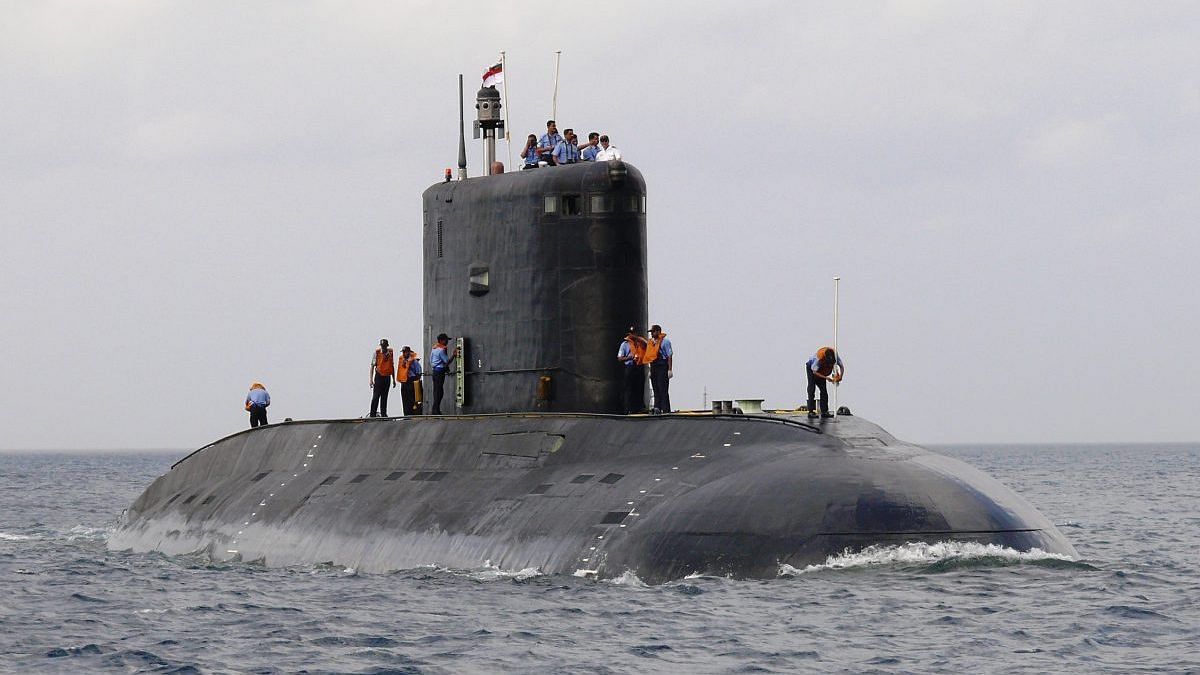The Indian Navy’s decision to transfer one of its Kilo-class diesel-electric submarines, INS Sindhuvir, to Myanmar hopes to limit Chinese military influence and aid Myanmar in its emerging naval competition with Bangladesh. On its part, Myanmar helps India secure its own maritime interests in the Bay of Bengal region.
Myanmar Commander-in-Chief Senior General Min Aung Hlaing had visited Delhi last month, during which India and Myanmar signed a defence cooperation agreement.
India’s willingness to transfer a frontline submarine when it is facing a shortage of such platforms reveals a desire on New Delhi’s part to consolidate the growing convergence in security interests with Myanmar. Gone is the time when there were fears of Myanmar offering a ‘second coast’ to China. Instead, the Indian Navy and the Myanmar Navy today conduct institutionalised joint patrols, and India is constructing connectivity corridors of its own in Myanmar in the form of the Kaladan project.
Also read: Modi government asks global warship makers to build new submarines worth $6.6 billion
Myanmar’s diverse approach
Myanmar’s own quest to acquire an undersea capability was hastened after Bangladesh’s acquisition of two old Type 35G Ming-class submarines from China in 2017. Notably, Myanmar has not turned to China to fulfil this requirement. Over the years, Myanmar military officials have voiced concerns about the quality of Chinese equipment supplied to them. Moreover, with Bangladesh wholly dependent on Chinese support for its new naval teeth, Myanmar would ideally want to look elsewhere to get platforms that can give it an edge.
As such, Myanmar has adopted a more diverse approach than Bangladesh on sourcing equipment for its naval modernisation. Although Myanmar set up its key naval dockyard with Chinese input, it has turned to India and Russia for sensors and weapons to equip the warships being constructed there.
For instance, the Myanmar Navy’s latest warship design, the Kyan Sittha-class frigate, has a mix of equipment from India, China, and Russia. In particular, the Myanmar Navy has sought Indian ship-borne sensors with each ship of the Kyan Sittha-class outfitted with a DRDO-Bharat Electronics Limited (BEL) HMS-X hull-mounted sonar and BEL supplied search radar. Last month, India also delivered the first batch of the indigenous ‘Shyena’ light torpedo, which will arm these ships, as part of a deal worth $37.9 million signed in 2017.
Also read: Russia wants to build P75I submarines, says India needs better vessels than Scorpene
Myanmar’s China worry
The Indian Navy Kilo-class submarine due to be transferred to Myanmar is also likely to feature export versions of Indian naval sensors such as the SMX2, which is a submarine sonar suite developed for the international market by the Defence Research and Development Organisation. Although ostensibly being transferred for training purposes, the offensive potential of this submarine is undeniable, given that it is significantly more capable than the older Ming-class submarine, which the Bangladesh Navy operates.
On the other hand, Myanmar is extremely worried about the uninterrupted growth of the China-supported Wa and Kokang rebel groups that operate in its Shan state. In this context, Myanmar’s desire to rebalance its security architecture away from dependence on China is understandable. This would also be in keeping with its traditional policy of not becoming beholden to either China or India, while looking to extract benefits from either side.
An example of this is Myanmar’s renegotiation of the terms for the development of the Kyaukpyu Port project, which will now receive only a fraction of the initially proposed level of Chinese investment. Nonetheless, Kyaukpyu is indeed being constructed as part of the China-Myanmar Economic Corridor, which itself is part of the Belt and Road Initiative. And India cannot afford to let Kyaukpyu end up hosting a Chinese naval element given its location in the North-Eastern corner of Bay of Bengal.
Also read: This secret facility is helping China’s navy become a submarine superpower
India, the helping hand
India’s decision to transfer a submarine is, therefore, a sort of inducement to encourage Myanmar to stick to its time-tested policy, while also building on the extant synergy in security ties. What helps India’s cause is that Myanmar is once again at the receiving end of Western opprobrium over the Rohingya issue and is looking for support from Asian democracies such as India. New Delhi obliged by inviting Commander-in-Chief Hlaing to visit India right after the US announced a visa ban on him.
This commitment to continuity in ties is reflected in the new defence agreement, which, among other things, intends to ‘strengthen maritime security by joint surveillance and capacity building’. Clearly, the submarine transfer with its sensor fit would aid such an agenda.
Meanwhile, for Bangladesh, which vehemently opposed Hlaing’s visit on account of the Rohingya issue, the message from India is clear: ‘Perhaps you should consider diversifying your sources of supply as well’.
The author is a former consultant to FICCI’s International Division and Chief Editor of Delhi Defence Review. His Twitter handle is @SJha1618. Views are personal.




India can go and beg some countries to take their ineffective and faulty weapons, but Bangladesh will always choose the better and battle proven systems from China or anywhere else.
Bangladesh is well aware of these type of moves by India. We shake with one hand while we look out for their deceptive moves through the corner of our eye….and supposedly the diplomatic relations have never been better. What a joke!
When did bangladesh vehemently opposed hlangs visit? Both India and burmese the birds of same feather which is very much understood in bd. And bd is certainly diversifying its defense need and increasingly looking at west, India does not come into the loop
Great diplomatic move by India however Indian diplomacy shall remain continue and should not drop Burma in between.